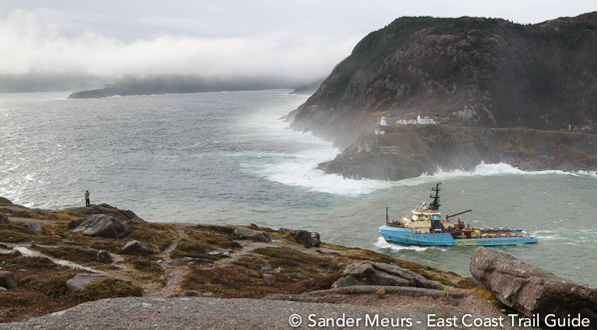Geography
St. John’s is the capital and largest city in Newfoundland and Labrador, Canada. With a population of approximately 200 000, this gem of a city is one of the top ten Oceanside destinations according to National Geographic magazine. The city was named after the feast day of St. John the Baptist by John Cabot upon his landing here in 1497.
Located along the coast of the Atlantic Ocean, on the northeast side of the Avalon Peninsula in southeastern Newfoundland Island, St. John’s covers ~446 km2 and is the most easterly city in North America. The downtown area of the city is located on the northwest side of St. John’s Harbour with the rest of the city expanding outwards from downtown in all directions.
The Island of Newfoundland itself is part of the Canadian Shield, which is a vast area of ancient metamorphic rock. This combined with the powerful waves of the North Atlantic and the winds and rain from the Arctic and Gulf Stream have created uniquely stark landscape of rocky shores, windswept fields, densely packed forests and beautiful ponds.
Weather
Eastern Newfoundland has a moderate four-season climate. The cold Labrador Current and the warm waters of the Gulf Stream meet on the Grand Banks in the North Atlantic, just off the coast of Newfoundland.
With our location in the middle of the North Atlantic, St. John's can experience extremes of ‘weather’ in a short period of time. In fact, locals will tell you that if you don’t like the weather, just “wait a minute, it will change.” As a result, we recommend that people bring clothing that will span from light summer wear to some form of rain protection if you plan on being outside enjoying our natural scenery.
Surprising to many is the fact that St. John’s has the third most temperate climate of all cities in Canada (behind Victoria and Vancouver). Summer days in the city, and the surrounding region, are usually warm and we normally have an ocean breeze. We seldom experience the humidity that goes with summer heat in central Canada or the northeastern United States. Summer evenings can be cool, so carrying a sweater is a good idea.
St. John’s and the eastern region enjoy a temperate marine climate with few extremes in temperature. During July and August, you can expect to Enjoy your usual summer activities without the humidity, with an average daily temperature of 20 to 30 degrees C/68 to 86 degrees F and nightly temperatures reaching 15 to 20 degrees C/59 to 68 degrees F.
Some information sourced from Destination St. John’s










